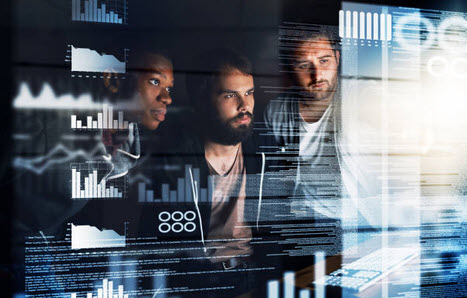AI APPLICATION SPACE
THE POTENTIAL OF CONTROLLED APPLICATION SPACES (CAS)
Harnessing the power of AI requires more than just algorithms and computational prowess. It demands real-world interactions, real-time feedback, and vast volumes of varied data. This is where Controlled Application Spaces (CAS) play an indispensable role.

"Wouldn´t it be great to be able to generate enough data to train your algorithms so that you can increase your confidence in it to a more comfortable level?"
Controlled Application Spaces do just that.
The Essence of Data in AI's Growth
Every AI-powered application, from the simplest chatbot to the most intricate robotic system, thrives on data. This data isn't merely numerical values but encompasses spatial coordinates, interaction logs, behavioral patterns, and more.
- Human Prosthetics: Let's explore the world of AI-integrated prosthetics. Devices such as the transtibial or transfemoral prosthetics aren't just passive attachments. They're embedded with AI systems that monitor nerve signals, movement pressures, and reactive motions. By continuously gathering data, these prosthetics can refine their operations, enhancing user comfort and adaptability.
- Surveillance Systems: Modern surveillance doesn't just record; it interprets. By analyzing facial features, body postures, and movement patterns, these systems can predict behavioral outcomes. As they're exposed to varied scenarios, they continually refine their predictions, ensuring greater security precision.
- Autonomous Vehicles: The conversation around self-driving cars isn't just about their technical prowess but their decision-making abilities in complex scenarios. These vehicles learn optimal reactions by being exposed to numerous on-road situations, refining their decision-making algorithms over time.
The crux is, every AI application, regardless of its current efficiency, has room for improvement. This growth trajectory is fueled by continuous learning from diverse data sets. However, the pivotal question arises: How do you ensure that your AI product acquires the right data without posing risks to real-world entities?
Controlled Application Spaces: The Optimal Training Ground
The answer lies in creating safe yet realistic training environments, where AI applications can interact, learn, and evolve without real-world repercussions.
- The Drone Scenario: Consider a drone designed for rural deliveries, navigating through erratic terrains with children playing, trees swaying, or seasonal decorations obstructing paths. Testing its capabilities in a real village might be hazardous, but a Controlled Application Space replicates these challenges without the risks.
- Co-Botics: The future of manufacturing includes robots and humans working side-by-side. These robots are equipped with sensors and programs to respond to human proximity. However, programming them for every possible human interaction is a herculean task. CAS offers a solution by providing diverse human-interaction scenarios, enabling the robot to learn optimal responses.
- Communication Bots: The journey from rudimentary chatbots to sophisticated conversational AI wasn't overnight. It was powered by countless interactions, where each conversation enriched the AI's understanding of human language and intent. Imagine accelerating this learning curve within a Controlled Application Space where bots can converse with human-like entities, gathering invaluable linguistic data.
Unlike traditional coding, machine learning builds upon experiences, much like a human brain forming neural connections based on encounters. Controlled Application Spaces accelerate these encounters, ensuring rapid and robust AI evolution.
The Priceless Nature of Human Interaction
Human unpredictability is both a challenge and a treasure for AI development. While mechanical and procedural tasks can be programmed, understanding human nuances, emotions, and unpredictable behaviors requires experiential learning. And ensuring that this learning happens without causing inadvertent harm is crucial.
Crafting Your Bespoke CAS
Finding an existing CAS fitting your unique specifications might be challenging, but crafting one isn't. By merging multiple training requirements, a single CAS can cater to varied applications, be it a burger-flipping robot, a delivery drone, or an interactive kiosk.
Visualize a CAS as your AI's theater. You dictate the script, characters, backdrop, and plot twists. This theater isn't necessarily isolated; it can be integrated into daily life, serving communities, or even becoming an attraction for the curious traveler.
The Road Ahead with CAS
Yes, building a CAS demands resources, but its returns in terms of AI maturity and data acquisition can be monumental. We envision CAS not as isolated labs but as integrated entities within our daily lives, creating a symbiotic relationship between humans and AI. Furthermore, with the right planning, CAS can also evolve into profitable ventures.
If you're poised to embark on this transformative AI journey and seek the perfect space to gather your quintessential data-sets, we're here to assist. Let's co-create a Controlled Application Space, tailor-made for your AI aspirations.

